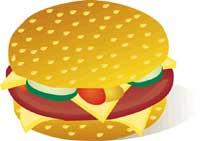Controlling the consumption of fats
In the previous issue, our colleague Jabier Agirre told us about good eating. He is right when Javier insists that the diet has a lot to do with our hobbies. However, there are totally accepted concepts or habits, such as the control of fat consumption, which no one doubts. Why? In the article on page 40 we have already explained the main properties of fats, we go on to give some advice.
About 10-20 years ago, fat consumption increased considerably to 45-50%, that is, half of the energy consumed came from fat. As a result, diseases of the heart and blood circulation are very abundant in the current adult population, and we can affirm without a doubt that this is a consequence of bad eating habits in childhood.

The recommendations that are given to us today practically anywhere, indicate that fat should only contain between 25 and 30% of the energy consumed during the day. This is, of course, a good measure to take into account, but as we all know, many human groups far outnumber this figure, since the child, for example, consumes bowels, pastries or sweets in an abusive way, so it continually attacks health.
You've heard it over and over again, reader, but we won't be tired of saying it: you can reduce lipid intake and avoid cholesterol, heart disease, types of cancer, and other diseases.
As indicated in the article on fat (page 40), the most harmful fats for health are those of animal origin (except fish), so it is recommended to consume meat three times a week and eggs up to three times a week, while fish can be consumed up to four times. Avoid sausages and cavities (liver, fat…) becoming common, but taking into account that children can eat two or three times a week in snacks.
Do not rule out dairy products, essential to meet the needs of calcium. In addition to all the above, croissants, pastries, pastries, pastries, etc. They should not have room in a healthy diet; not to exclude themselves entirely only for some special occasion.
Take the oil measure; 3 tablespoons of oil distributed between all meals is sufficient per person per day. And don't forget that raw oil is better than roast. Finally, if butter, margarine and the like are not used for physiological (pregnancy, lactation…) or physical situations in which much energy is required.
- Eskimo: neither heart disease, nor diabetes These pathologies so common among us hardly occur among the eskimo. Everything points to the fact that basic marine products in the diet of this human group have a lot to do with the low degree of appearance of these diseases. In fact, fish are very rich in polyunsaturated fats and, as we know, they help reduce cholesterol levels. This hypothesis is favorable, among others, to the fact that the Eskimo ingest 14 g of unsaturated fat per day and that the citizens of the United States consume only 0.2 g per day.
- The relationship between diet fats and eye diseases A survey conducted last year in Madison of the United States shows us that the excess of saturated fat and cholesterol in our diet, in addition to the diseases of the heart and circulatory apparatus, generates vision problems. Specifically, it has been detected that the consumption of fats can cause the appearance of a disease called maculopathy. This study, carried out between people between 45 and 84, showed that the risk of suffering maculopathy for fats and cholesterol increases by 60-80%.
Buletina
Bidali zure helbide elektronikoa eta jaso asteroko buletina zure sarrera-ontzian











